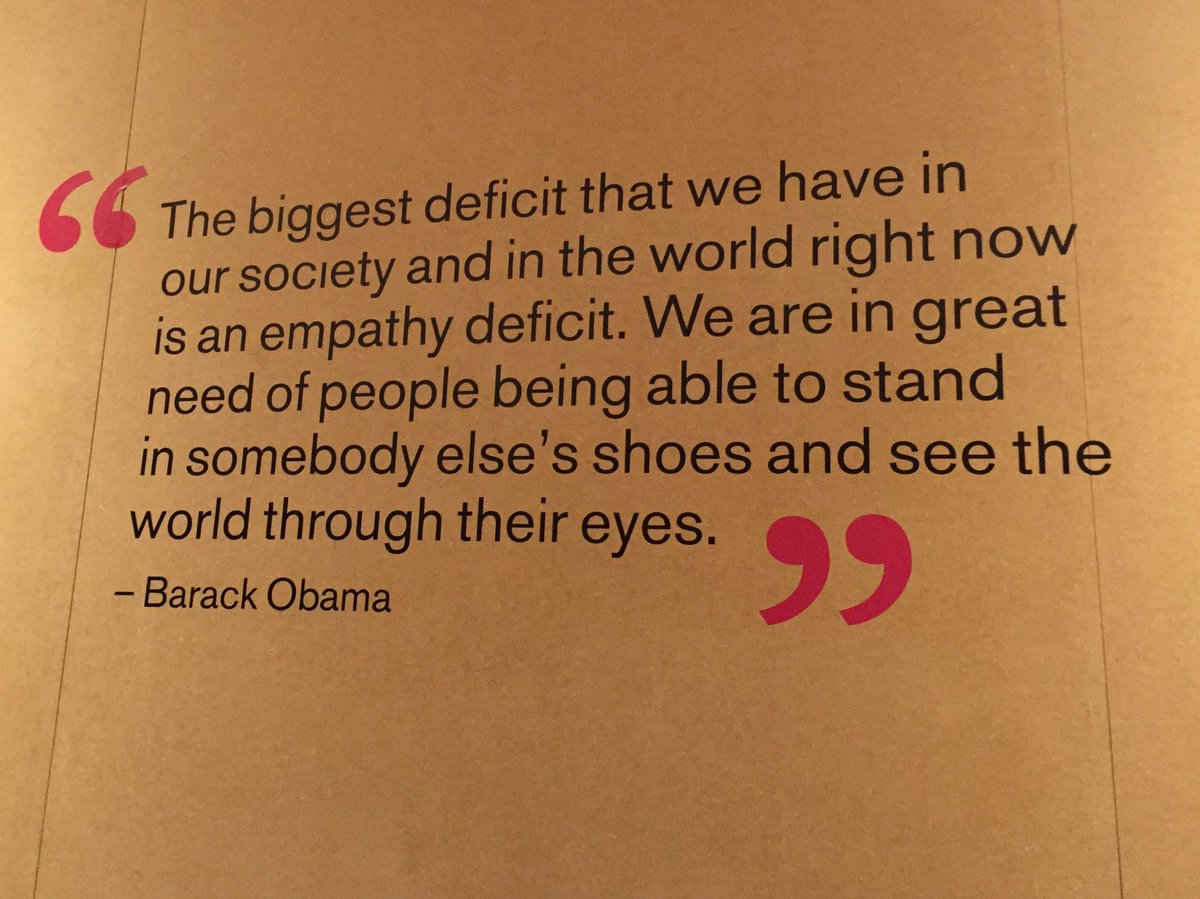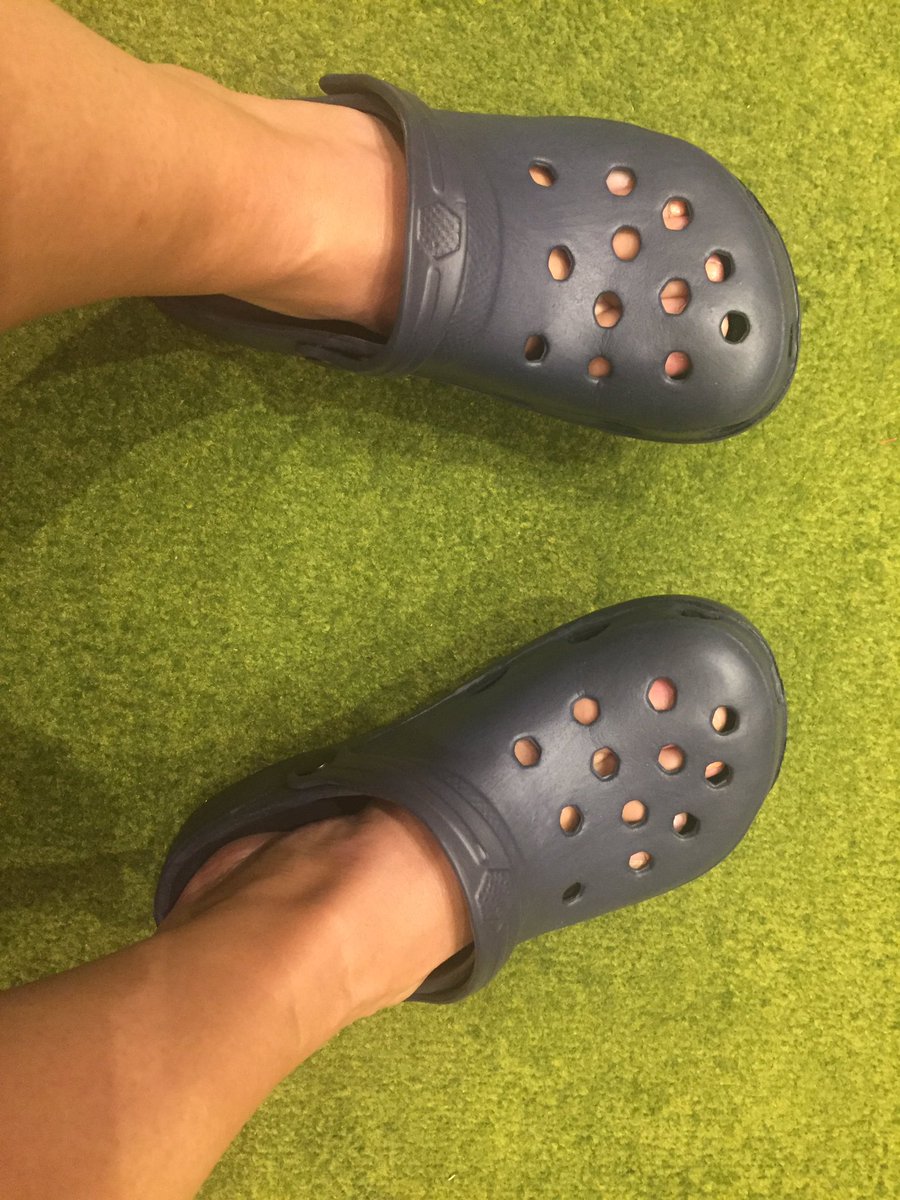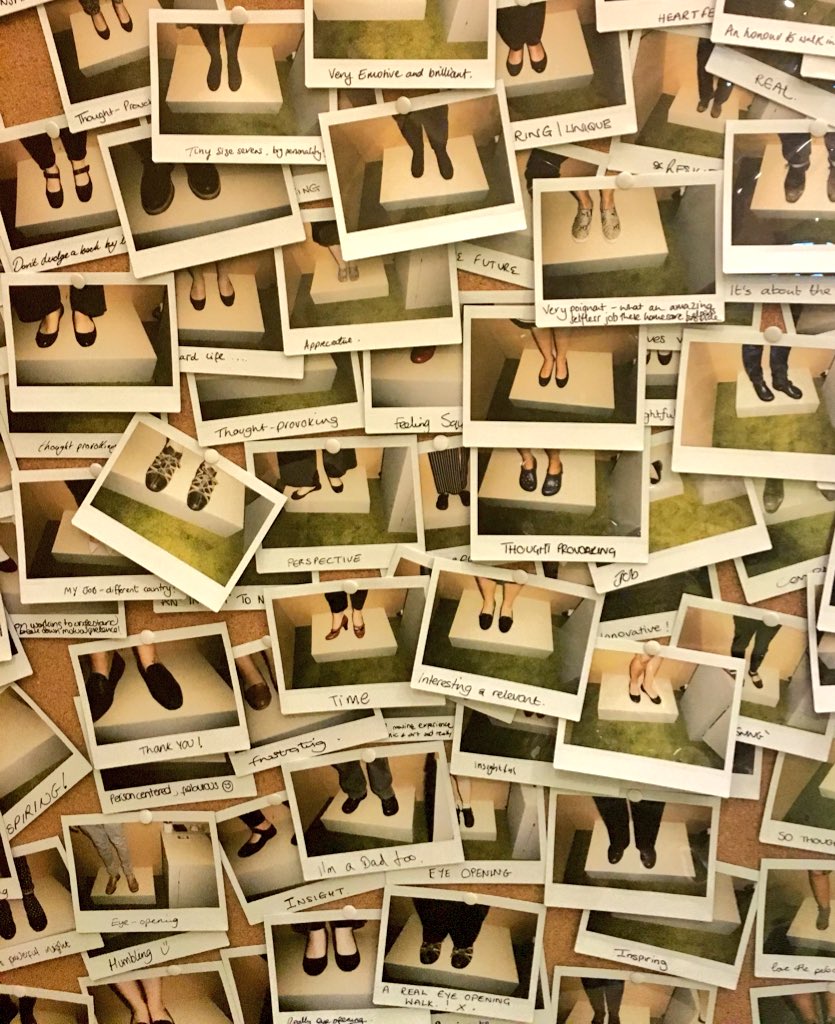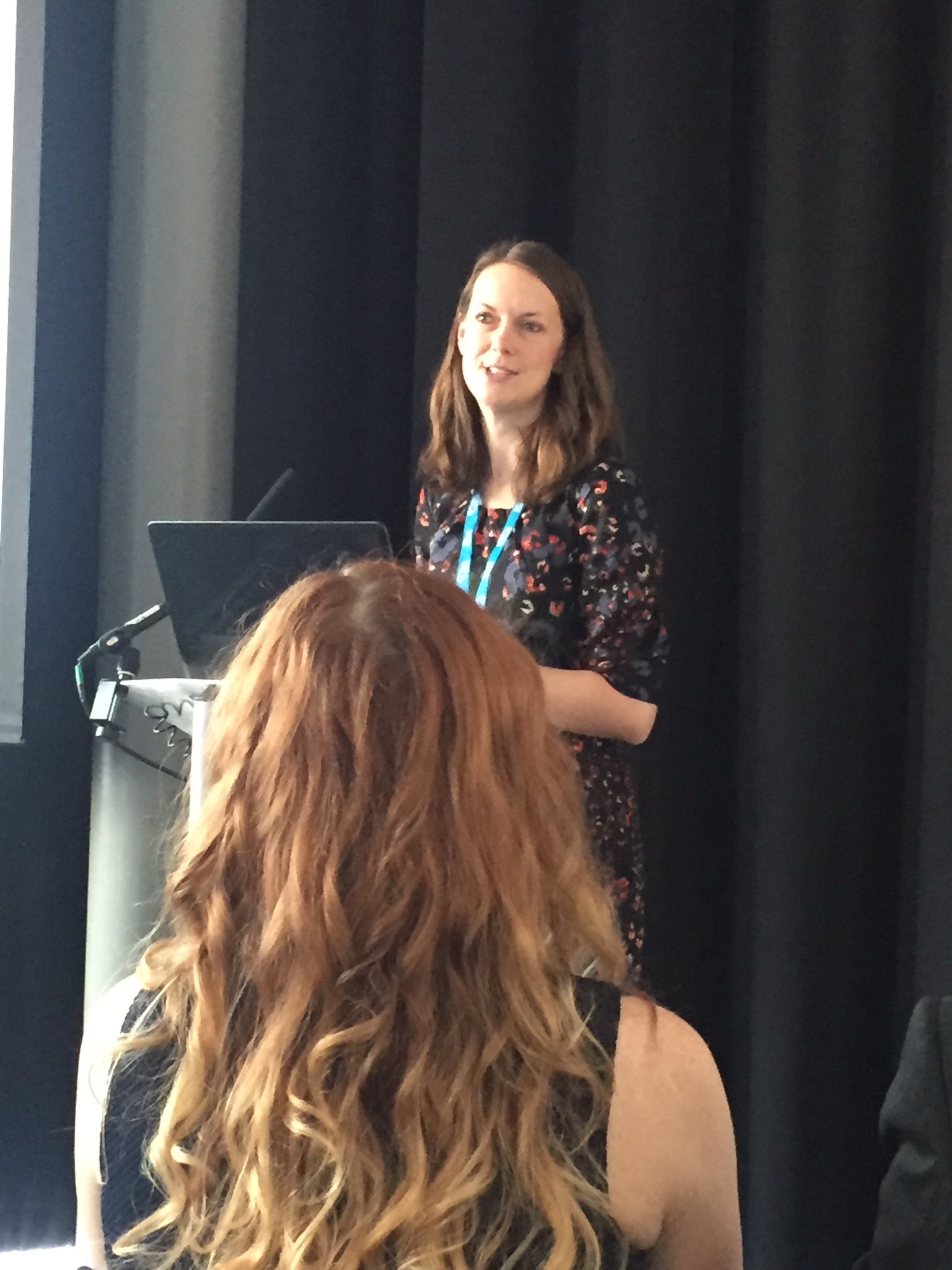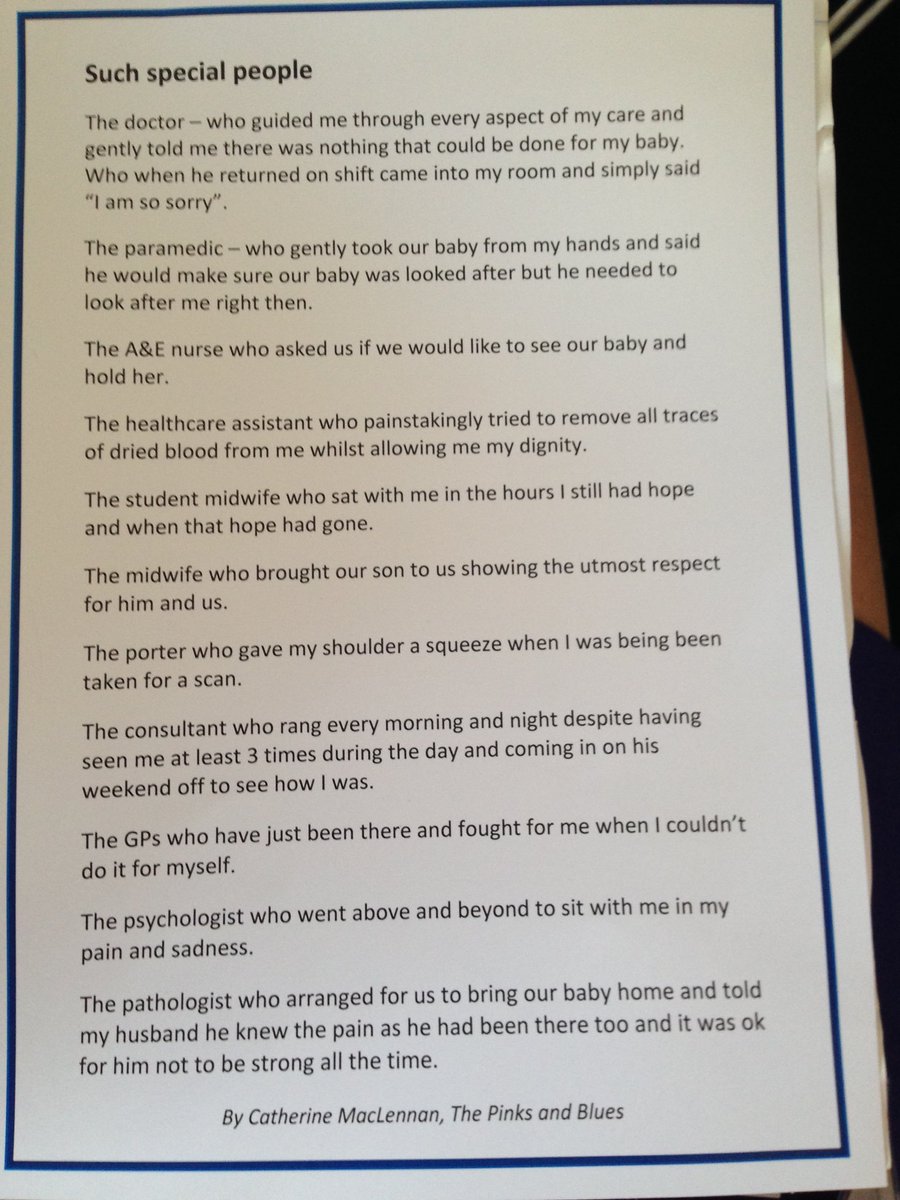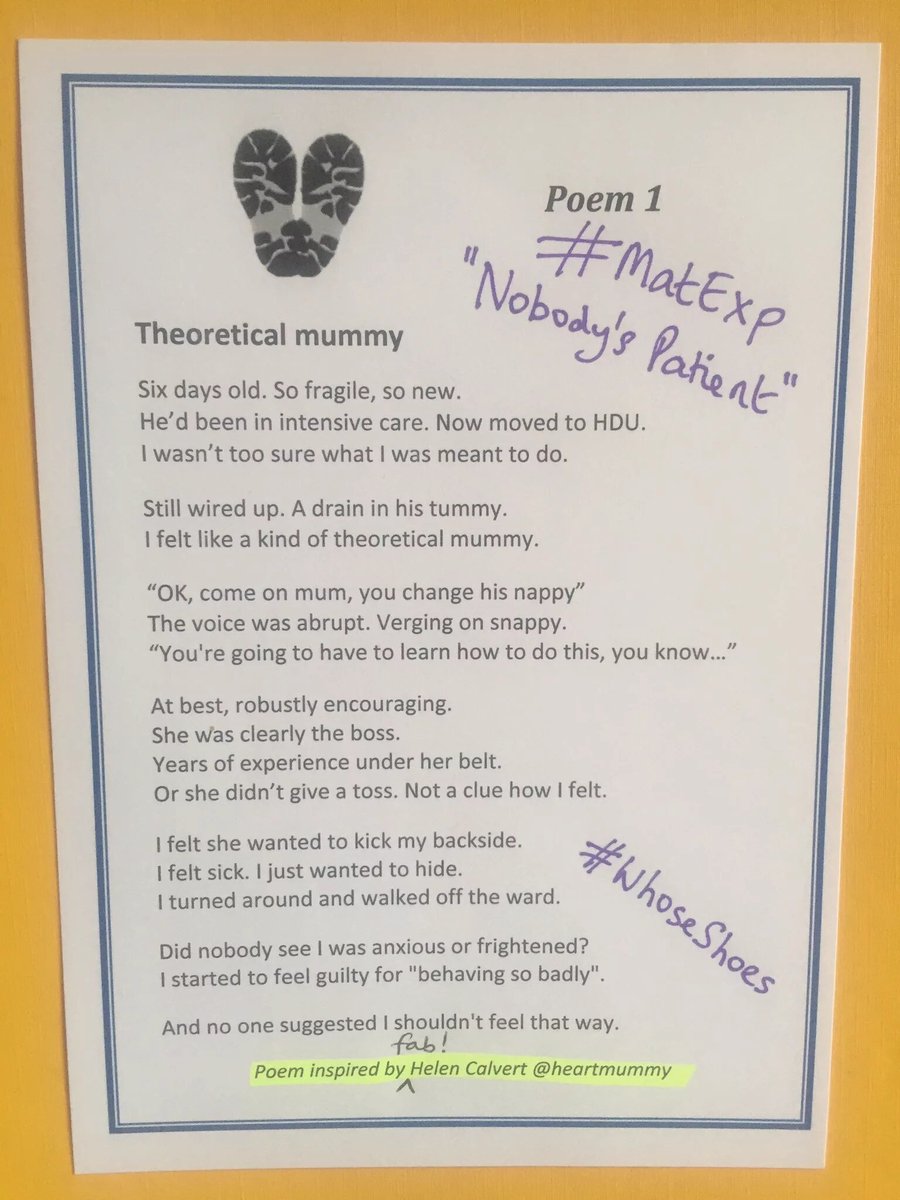Recently, I have had some midwifery (and nursing) students ask me about how to write their dissertation (Usually a literature review)…
Frequent questions included:
- How to write a midwifery dissertation
- How to write a nursing dissertation
- How to structure a literature review
- How to do research in midwifery
- How to do research in nursing
- How to bring the evidence together
- How to make a well structured argument
This fairly long blog post may answer some of these questions for nursing and midwifery students…
Part of my work involves being a facilitator for problem based learning. Through this role, I enjoy supporting undergraduate health care students to study and develop their skills in evidence based practice. I do not claim to be an academic genius, and many of the rules in academia seem to be subjective in any case. However, in response to students asking for some suggestions and guidance, I hope that this simple and loose guide to literature reviewing may act as reference material for some student nurses and midwives working towards their dissertations or indeed any other essays and beyond.
Literature reviewing for dummies
(except you are not a dummy!)
Below I have written a very simplified example of a literature review. This is based upon a fictional subject which holds no relation to either midwifery or nursing practice. However, these methods may be applied to any subject in either nursing or midwifery practice.. you just need to replace my words with nursing or midwifery words as required.
Note: Although this may be a starting point to get you thinking about structuring an essay, literature review or dissertation please be mindful that one size may not fit all situations. Also, please do not take this example as a literal quick fix that will magically translate your work into A* material… always speak to your own tutors throughout the process of your writing in order to make sure that you are staying right on track.

Title: Make sure it states clearly what your essay will be about, what it will do and explore, and how you went about doing what you have done:
How do 20 to 30 year old’s experience vintage tea parties? A narrative literature review.
With this title I am clearly setting up the parameters of what I am going to be looking at. I am also presenting a clear and answerable question which chooses a population of 20 to 30 year old’s to look at, and an ‘intervention’ or ‘interaction’ with a vintage tea party to explore. I am also telling my reader straight away that I will be exploring this topic and trying to answer my question by reviewing the relevant literature (a literature review).
Introduction: Make sure that you tell the reader exactly what this essay is going to do and produce. You will also want to set out a little bit about why you have chosen to look at your particular topic.
Introduction
Vintage tea parties are becoming increasingly popular among 20 to 30 year old’s (Vintage quarterly, 2016). This may suggest that populations within this age group enjoy hosting and attending tea parties, yet it is not yet known how this particular population experience vintage tea parties around the world. As 20 to 30 year old’s look to enjoy more social activities and enhance their social well-being, it will be important to understand how and why they may experience vintage tea parties as either a negative or positive social venture. This review aims to unite the evidence in relation to how 20 to 30 year old’s experience tea parties around the world. It will do this by reviewing the relevant literature and presenting it’s findings narratively in order to produce a global overview of current understanding.
Background: Give the reader a little bit of history to the topic in focus. Set the scene and entice your reader to learn more.
Background
Humans have enjoyed socialising with other humans for approximately 200,000 years (Human socialisation journal, 2014). Many of these social activities have often involved food and drink (Food and drink journal, 2013). They have also been used as a means to unify various groups of people, and allow new generations of humans to meet new tribes of people (Tribal weekly, 2015). Along with food and drink, social events in history have often involved music making, artworks and entertainments (Entertainment journal, 2013). More recently, these social events have introduced the concept of ‘themed’ social events where participants often enjoy a changed reality for a short period of time (Party time monthly, 2014). However, it is not yet known which particular components in combination enhance the experience of event participants.
Tea parties are one way that humans often come together in a bid to enjoy social interaction with food, drink and merriment (International Tea Party Journal 2015). The concept of a vintage themed tea party is a relatively new one, and is an activity currently most popular within social groups aged between 20 to 30 years old (Vintage parties quarterly, 2016). This age group is typically one which looks to enjoy a healthy work/life balance and frolic with similar social groups (Frolicking International, 2016). Vintage tea parties may be one way in which this group may enjoy a fruitful social life, yet it is not known which particular elements of a vintage tea party are most efficacious when brought together in unison. Therefore, it will be important to explore the literature in relation to how this particular age group experiences vintage tea parties, and which particular elements of a vintage tea party may come together to optimise this experience for future social occasions of this type.
Methodology: How did you search for your answers? Give as much detail as you can. What did you do? How? Where did your results and answers come from? How did you extract what you wanted from what you found? How are you going to share this and make your argument? Why?
Methodology
The literature in relation to how 20 to 30 year old’s experience vintage tea parties was reviewed narratively in order to gain a current overview of global understanding. The overriding question for this review was:
How do 20 to 30 year old’s experience vintage tea parties as a social activity?
You may want to use the SPIDER tool to formulate your own question: The SPIDER tool was developed by adapting the PICO tool, I will apply this hypothetical research question to this tool as follows:
- (S) Sample: Populations aged between 20 and 30 year’s old.
- (PI) Phenomenon of Interest: The experience of either attending or hosting a vintage tea party as a social activity.
- (D) Design: Any study type (surveys/focus groups/cohort studies/interviews etc).
- (E) Evaluation: The views, attitudes and opinions of 20 to 30 year old’s who either attend or host vintage tea parties as a social activity.
- (R) Research type: qualitative, quantitative and mixed-methods research will be searched for.
Search strategy
Initially, the CINHAL, Medline and PsycINFO electronic databases were used to retrieve relevant papers in relation to the subject matter. Several key terms which were considered to be of relevance were entered into these databases simultaneously. These terms were entered together, and united using either the word ‘and’ or ‘or’. The search terms were used in the following format:
Vintage tea parties ‘and’ social occasions ‘or’ parties ‘and’ young people and’ tea ‘and’ cake ‘or’ lace doilies ‘or’ old fashioned ‘and’ antiques ‘or’ social gatherings ‘or’ cupcakes.
Inclusion criteria:
Papers were included if they specifically focused on the experiences of people aged between 20 and 30. Papers had to have a particular focus upon the experience of vintage tea parties in order to be included within this literature review. As the ‘vintage’ era was considered to be between the 1930’s and 1940’s, only papers published from 1960 onward were considered for this review. It was considered that from this period, the traditional tea party would indeed be classified as ‘vintage’ in retrospect.
(Please note that this is an extremely crude search strategy. These can be made much more efficient and systematic in more advanced papers – See an example here.)
This search strategy resulted in 27 separate searches and retrieved 1720 papers. Duplicate articles were then removed to reveal 808 papers. The abstracts of these remaining papers were then scanned reviewed and against the inclusion criteria, leaving 235 papers for further review. These remaining papers were read in their entirety and assessed for their suitability for inclusion. Following these assessments, 88 papers were removed as they did not focus upon the experience of tea parties, only the process of hosting them. Additionally, 92 papers were removed as they referred to the experiences of populations either over the age of 30 or under the age of 20. Lastly, 52 papers were removed as although they did refer to the experience of attending and hosting tea parties, these parties were not considered to be vintage in nature. This left 3 papers for inclusion. The reference lists of these papers were scanned for any further papers suitable for inclusion. Through this scanning, 1 further paper was included, resulting in a total of 4 papers to be included within this review. The paper selection process is represented within figure 1.
Figure 1: Paper selection process – This should leave the reader with no doubt about what you did, how you selected your papers for inclusion or exclusion and why. It also allows you to reflect upon your process.
Note (n=) Just means ‘number of’ ..e.g. (n=1).
Figure 1: Paper selection process
Records identified through database searching
(n =1720) |
∇
Additional records identified through other sources
(n = 1) |
∇
Records after duplicates removed
(n =912) |
∇
Records screened
(n = 235) |
∇
Records excluded
(n = 231) |
∇
∇
| Full-text articles excluded:
Paper does not focus upon the experience of tea parties (n =88)
Out of age range criteria (n=92)
Tea party not vintage in nature∇ (n=52) |
Papers included: This should be some sort of table where you present which papers you are including within your review. You can go into further detail of each one as appropriate… But for this example it might look something like this:
Table 2: Study overview and characteristics
| Paper |
Sample number |
Sample Type |
Study Design |
Findings |
|
The mad Hatters tea party (Carroll, 2015) |
4 |
Alice in wonderland (aged 21), The Mad Hatter, the March Hare, and the Dormouse |
Participants self reported their experiences to an interviewer.
|
Tea, iced cakes and singing are ‘enjoyable’. Can be enjoyed during either a birthday or an ‘un-birthday’.
|
| Tea for two, and two for tea (Sinatra, 2012). |
2 |
Doris Day (aged 25) and Frank Sinatra (aged 29). |
Focus group discussion |
Tea parties in solitude (2 people) with sugar cake make them ‘happy’. Also knee sitting is enjoyable in this context. |
| A tea party on the ceiling (Poppins, 1964) |
2 adults aged 29. |
A nanny and a chimney sweep |
Questionnaire survey. |
Laughing is key to a successful vintage tea party. |
| The queens tea party (Buckingham palace, 2010). |
2500/8000 attendees aged between 20 and 30. |
A cross-section of honoured British society |
Online survey |
Cupcakes, doilies and finger sandwiches served with a variety of tea made the tea party ‘special’. Especially in the presence of queens and princesses. |
At this point you may want to comment on the quality of the studies or papers you have selected. You can either do this by adding an extra column within the table above, or comment on the quality of studies within another subsection. If the quality of studies is poor, don’t worry…just acknowledge that the study is poor, and recognise that any results or recommendations you draw from those studies should probably be given less authority than the more rigorous studies.
A basic guide as to which studies are considered to be academically superior is outlined within the pyramid below….

There are many published academic tools for assessing and appraising the quality of each particular study, and also for assessing any risk of bias that might be apparent. I have included a very basic quality assessment tool for assessing qualitative studies below. Feel free to use this or any more advanced ones you may find.

You may also want to report whether the studies that you have chosen to include are either qualitative or quantitative (or a mixture of both)
(sometimes called mixed method)!

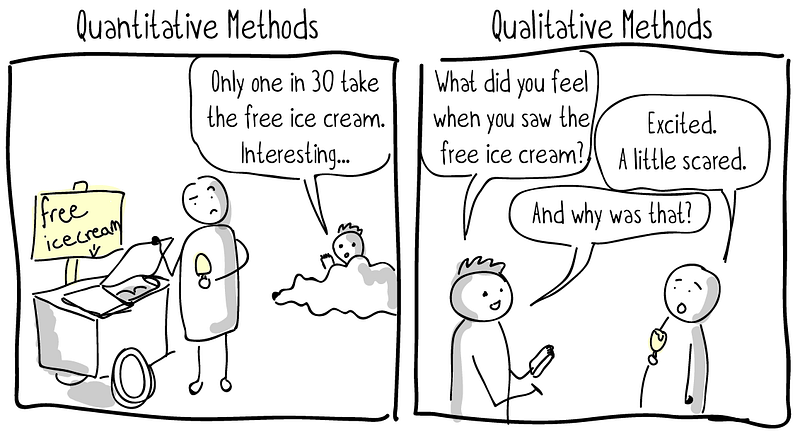
(Images from: https://uxdesign.cc & http://www.slideshare.net/engelby/media-quantitative-and-qualitative-research-2012)
Data Extraction: Now that you have chosen the studies/papers with which you will address your own research questions, you will need to describe exactly how you have drawn out the knowledge or ‘data’ from those papers. This can be simple, or again, it can be a very detailed process with the use of complex data extraction tools.
Something like this tool below may help you to draw out knowledge from a paper…

(Tool from http://www.rrh.org.au/articles/subviewnthamer.asp?ArticleID=1523)
But equally, you may want to describe a simpler approach to your own data extraction method as follows…
Data Extraction
Each paper was read and re-read, whilst themes relating to the experience of either being a host or a guest at a vintage tea party were annotated throughout. Any numerical or ‘quantitative’ data was noted and will be reported narratively in order to build a broad picture of how 20 to 30 year old’s experience vintage tea parties.
Limitations: You may want to state what the limitations of your chosen studies were. Samples too small? only partial results available? not widely representative? – Bare in mind that some different types of essays will want the limitations section presented towards the end of the essay rather than just before the results section..
Limitations
This review has retrieved a small amount of papers, therefore the findings of this review may not be representative of a wider population. Also, due to the small amount of papers retrieved, it will not be possible to perform a meta-analysis of results (A meta-analysis is basically where you compare lots of similar data from a number of similar studies in order to see if the findings match closely or not. This will tell you if you can be really sure that what the evidence is telling you is really reliable and true… or not).
None of the studies selected used any verified tools to measure either a participants negative or positive experience of interacting with a vintage tea party. Therefore, these findings rely upon participant ratings, words and observations. Additionally, the studies retrieved can only be related to experiences of vintage tea parties within the western world, therefore we cannot be sure that this review is representative of other experiences around the world.
See here for a more detailed power point presentation on how to critique studies
You may also want to touch upon the limitations within your review….Did you really do everything you could have done to find all papers? What limited or prohibited you from creating the very best review of all time?
Results: Here you need to state what you actually found, what you interpreted from these findings and how these findings may related to each other.
Results
This literature review has retrieved 4 papers which illuminate how 20 to 30 year old’s within the western world experience both hosting and attending vintage tea parties as a social activity. These studies used a variety of data collection methods such as interviews (Carroll, 2015), focus groups (Sinatra, 2012), Questionnaires (Poppins, 1964), and online surveys (Buckingham palace, 2010). All studies reported that the experiences of 20 to 30 year old’s either attending or hosting vintage tea parties were positive overall. None of these studies reported any negative effects for any of their participants. Ultimately, vintage tea parties were found to be a jolly social activity for all attendees and hosts.
Synthesis of findings
(This is where you bring your results together and make sense of them, there are many different ways to synthesize your results: These methodologies can include meta-narrative, critical interpretive synthesis, meta-study, meta-ethnography, grounded formal theory, thematic synthesis, textual narrative synthesis, content analysis, qualitative metasummaries, framework synthesis and ecological triangulation) – Read more about this stuff here.
But let’s not over complicate things here. We will start by examining all aspects of, and the context of each paper, whilst comparing and contrasting the results of each paper with the others. In doing so, we may use a mixture of the methodologies described above.
In terms of finding a suitable location for a vintage tea party, both Carroll and Buckingham palace chose to locate their vintage tea parties within a garden setting (Carroll, 2015 and Buckingham Palace, 2010). Although the setting of Carroll’s tea party was in a wooded clearing, it was set behind the mad hatters house, and therefore considered to be a back garden, in the same way that the queens garden party is hosted behind the queens properties. Conversely, Poppins (1964) explores the experiences of those present at a tea party hosted in a living room, and more specifically, upon a ceiling. Both of these settings were reported to be enjoyable for guests, as those interviewed following the Mad hatters tea party reported experiences of ‘merriment’, ‘joy’ and ‘enjoyment’ in response to being in these locations (Carroll, 2015). Equally, those who completed the surveys and questionnaires posed by Buckingham Palace (2010) rated their experiences of ‘merriment’, ‘joy’ and ‘enjoyment’ as “9 out of 10” on a positive rating scale when the tea party was held outdoors, with access to the garden rooms indoors. Sinatra (2012) did not specify a location for their tea party.
Opinions and experiences surrounding the display of appropriate etiquette appears to form some conflict within the studies. Sinatra (2012) encourages two guests to sit on one another’s knees, whilst serving tea. Whilst one guest at the tea party on the ceiling expressed some distaste at the ‘excessive laughter’ and the location of the tea party being hosted upon the ceiling (Poppins, 1964). The guests and hosts of the Mad Hatter’s tea party felt that it was very important to be officially invited to the tea party, rather than simply turn up unannounced (Carroll, 2015). Equally, the queen’s tea party hosted by Buckingham Palace (2010) requires all guests to present an official invitation before entry is permitted to the garden tea party. This tea party also requires its guests to wear a particular and suitable attire. Burping, belching, trumping and swearing is never permitted, and it is expected that one holds one pinky finger out whilst drinking tea (Buckingham Palace , 2010).
Food and other beverages form an important part of each of the tea parties referred to within this review. For the Mad Hatter’s tea party, it was a focus on tea and iced cake that contributed towards both the guests and hosts having a ‘jolly’ time (Carroll, 2015). Indeed, tea and cake feature heavily within each of the studies presented, and are often commented upon as a the source of an enjoyable experience (Sinatra, 2012, Poppins, 1964, Buckingham palace, 2010, Carroll, 2015). However, a variety of finger sandwiches, petit fours and other pastries were also rated highly (10 out of 10) as the ‘delight’ of the vintage tea party, making it more ‘special’ (Buckingham Palace, 2010, Poppins, 1964). Participants within each of these studies also reported that the presentation of this food is important, as the use of doilies, tea pots, cake tiers and napkins can enhance the experience of a vintage tea party (Sinatra, 2012, Poppins, 1964, Buckingham palace, 2010, Carroll, 2015).
The timing of hosting a vintage tea party was preferred in the afternoon as ‘afternoon tea’ by all studies (Sinatra, 2012, Poppins, 1964, Buckingham palace, 2010, Carroll, 2015). Additionally, the hosts and guests at the Mad Hatters tea party suggested that the vintage tea party could be enjoyed during either a birthday or an ‘un-birthday’ (Carroll, 2010). Those who completed the surveys and questionnaires posed by Buckingham Palace (2010) and Poppins (1964) rated their experiences more highly “9 out of 10” if a tea party hosted at any time included laughter, pleasant conversation and singing. These components were also apparent within the findings of both the ‘Tea for Two’ tea party, and the Mad Hatters tea party (Sinatra, 2012, Carroll, 2015).
Discussion: This is an opportunity to interpret these results, and share what they might mean in a wider context.
- What was interesting?
- What was surprising?
- Did you find what you expected to find?
- How will this new knowledge change things in the future?
- What are the implications of finding this new knowledge?
- How will it affect your, and others practice?
Let’s shine a new light on things!…

Discussion
(Start with a summary of your results)
Overall, participants aged between 20 and 30 reported positive experiences in relation to both hosting and attending vintage tea parties. Experiences were reported via a number of sentiments including ‘Joy’, ‘Merriment, ‘enjoyment’ and were described as being ‘special’. Questionnaires and surveys also highlighted that vintage tea parties were enjoyed both outdoors and indoors, mainly during the afternoon. Tea served from teapots with fine china, cake, sandwiches and pastries placed upon doilies and tiered plate displays can enhance ones experience of a vintage tea party, as can singing, laughing and pleasant conversation. As such, vintage tea parties can be considered a positive social activity for those aged between 20 and 30.
It was interesting to note that conversation and laughter in particular played a key factor in how this population enjoyed vintage tea parties. This would suggest that the success of such tea parties rely upon more than just the location of the event or the practicalities of hosting them. As such, part planners may wish to consider the implementation of conversation catalysts or ‘ice breakers’ to create the atmosphere required for success.
Etiquette is also an important factor to consider when creating an enjoyable vintage tea party, as gatecrashers can cause distaste among both hosts and guests. It is clear that invitations provide confidence and a certain formality to events as apposed to a spontaneous vintage tea party, which may become more informal as a result.
As many 20 to 30 year old’s already attend vintage tea parties, it was anticipated that they would indeed find these experiences to be enjoyable. The results of this review provide new and united evidence to strengthen this notion, and illuminate the particular reasons why these experiences may be enjoyable. This new evidence will be important to new hosts and party planners wishing to organise enjoyable vintage tea parties as social activity.
Implications for future practice
(What are you going to do or recommend in light of what you have found??)
Future tea parties would be enhanced by the application of these findings, as party hosts look to create enjoyable activities for those aged between 20 and 30. Party planners may wish to consider ‘vintage’ as a theme, and encourage guests to fully embrace this theme, concept and event as an alternative to the modern tea party. Future research may wish to explore these vintage tea parties in more detail with progression towards a large and adequately powered randomised controlled trial (RCT), as this would enable party planners and party goers to create the ultimate vintage tea party, as guided by a more rigorous evidence base.
“What is an RCT?” I hear you cry…
(See simplified info-graphic below)

Conclusions: This is where you recap what you have done and found. It should match closely with the introduction in which stated what you were going to do. You should leave the reader with a final impact statement and your own final reflections.
In every day party creation, it is important to create an enjoyable social activity. As 20 to 30 year old’s seek to attend such activities, it is important to explore which social activities are experienced positively by this population group. This paper has reviewed the evidence in relation to how 20 to 30 year old’s experience vintage tea parties. Following a review of 4 academic papers, the evidence presented here suggest that vintage tea parties are indeed a jolly event for 20 to 30 year old’s.
As well as discovering that this population enjoy vintage tea parties as a social activity, this review has also unearthed which components may be most contributory to the success of such an event. As such, the hosts of future vintage tea parties should plan to include tea served from teapots with fine china, cake, sandwiches and pastries placed upon doilies and tiered plate displays, singing, laughing and pleasant conversation.
You may also want to include a subsection here that specifically outlines how you have met the learning outcomes set out by whichever module or dissertation/thesis it is that you are completing.

And there we are, a guide to writing a literature review. This guide is supposed to be a reference tool for you all to create your own masterpiece essays and dissertations. The review I present here may be much shorter than what you are required to produce, however, I hope it will serve as reference material as you progress in your academic writing. Although the subject matter here is vintage tea parties, I do hope that many nurses and midwives will easily be able to apply nursing and midwifery topics in place of the tea party.
The principles of writing a literature review are virtually the same within any subject matter. Here for instance, you just replace the vintage tea parties with diabetes, and boom…you have a literature review on how a certain population experiences diabetes or diabetic care. Whatever your academic question is, a literature review is a great way to help you find answers, improve your clinical practice and discover new evidence based practices to apply in the real world. Many clinical guidelines are constructed by reviewing the available literature. As you complete your literature reviews, you will also be able to make recommendations, based upon what you have found.
Although I have presented a loose structure for a literature review here, please be aware that there are many other structures, methodologies and reporting styles available. Yet I hope that this example will fit loosely around any essay topic if applied appropriately.
If you have any questions or comments, please feel free to add these to the comments section below. I really hope that this makes academia a little less scary for student midwives and nurses. For further hints and tips for essay writing, see my other article here.
Until next time…take care of yourselves, and each other ❤💚💜































